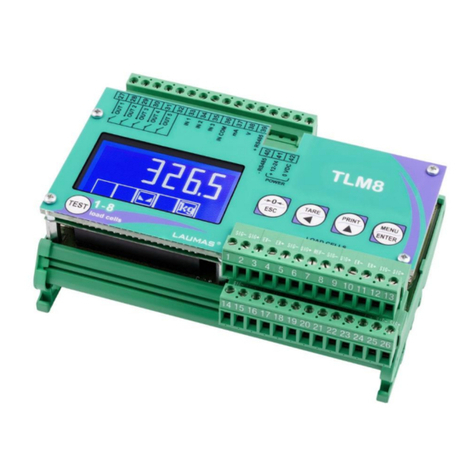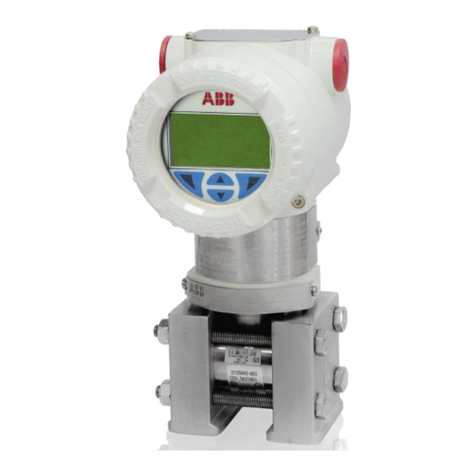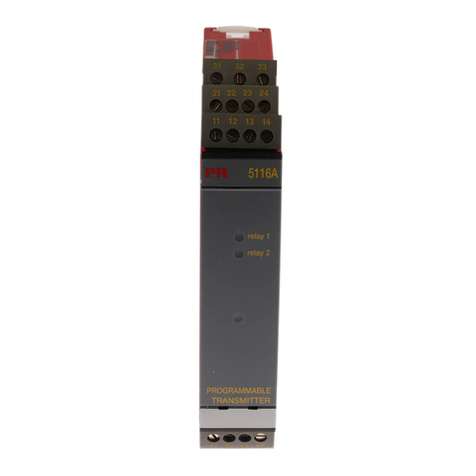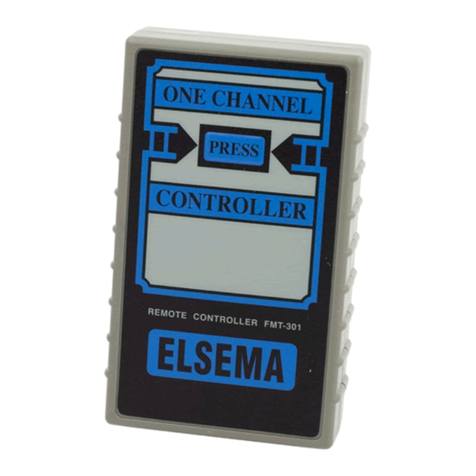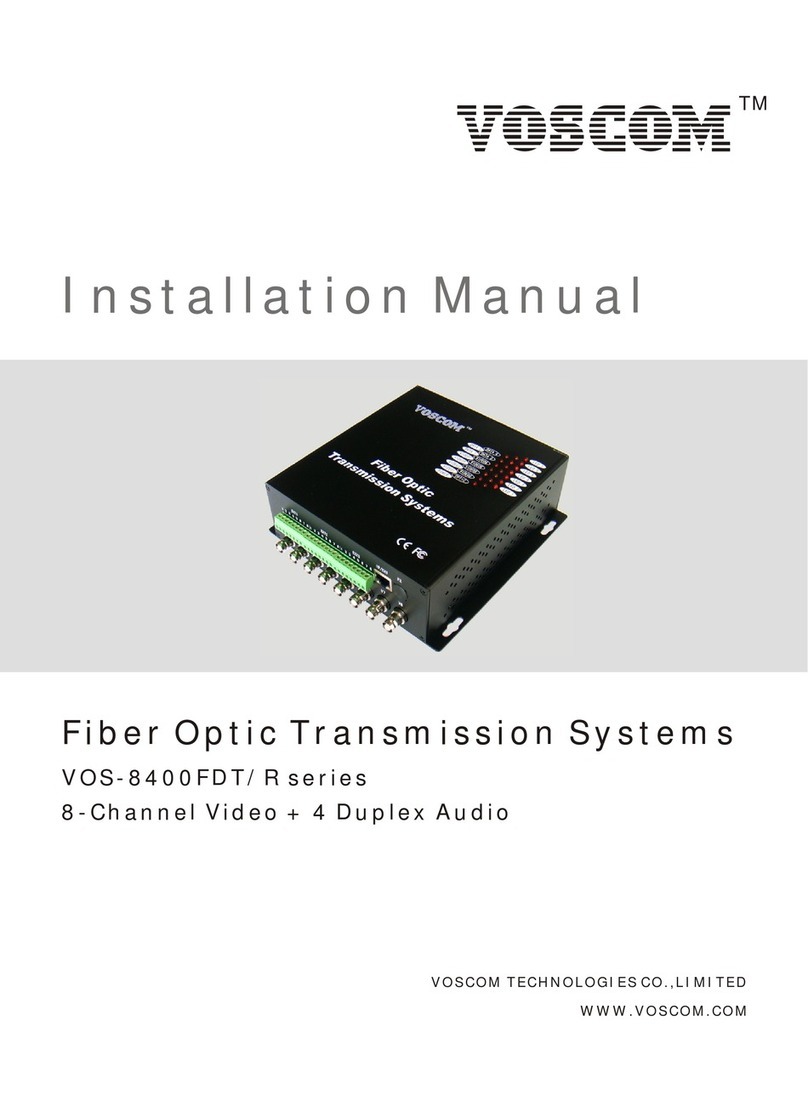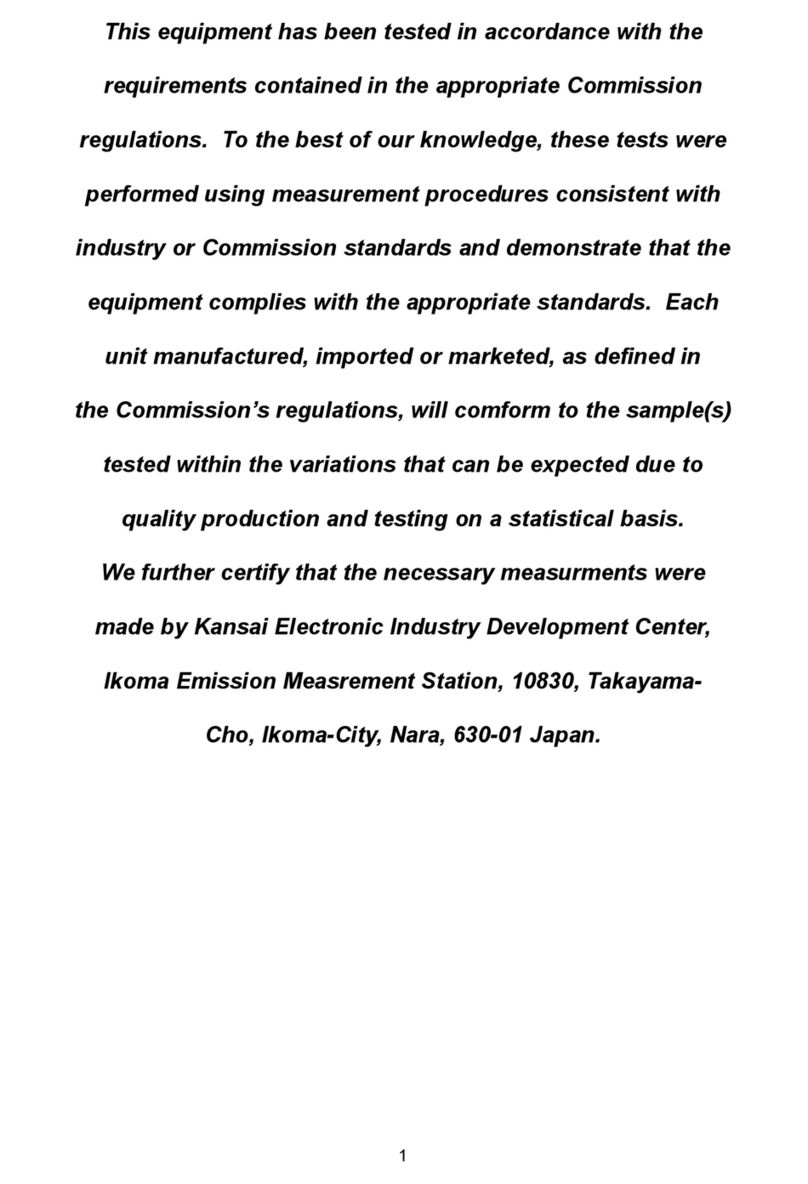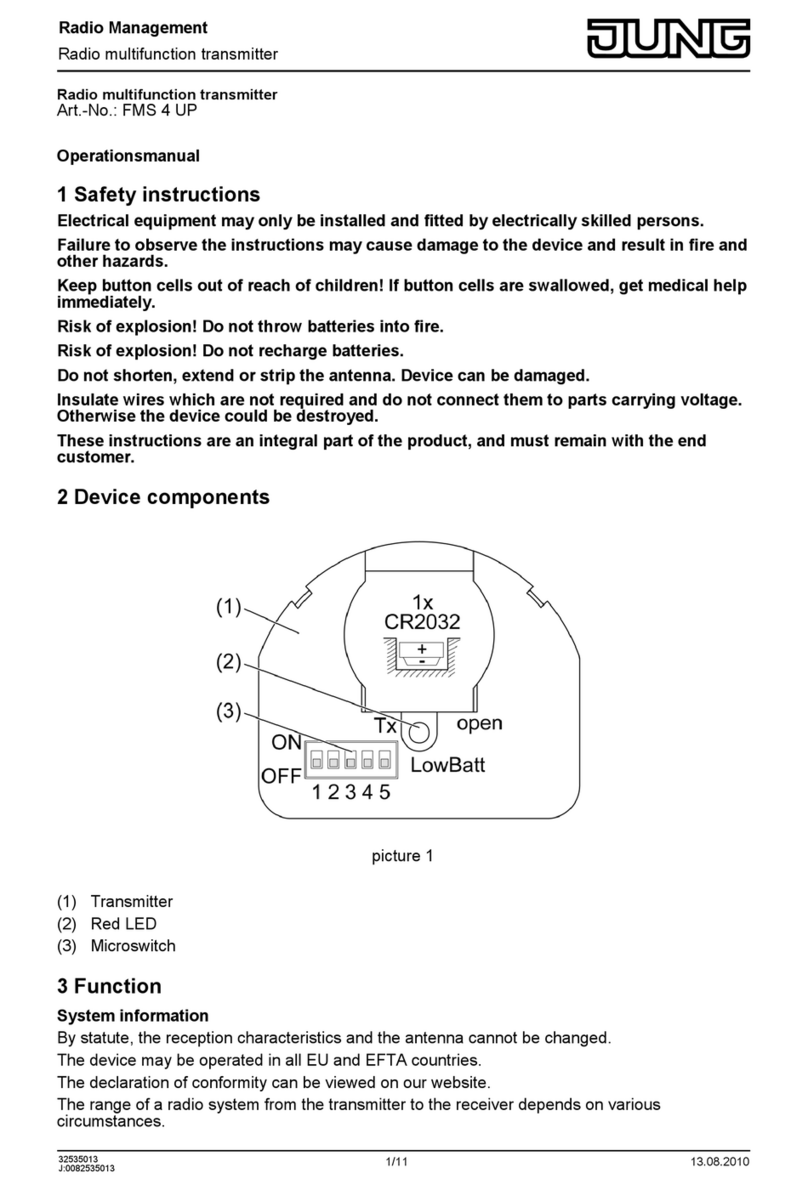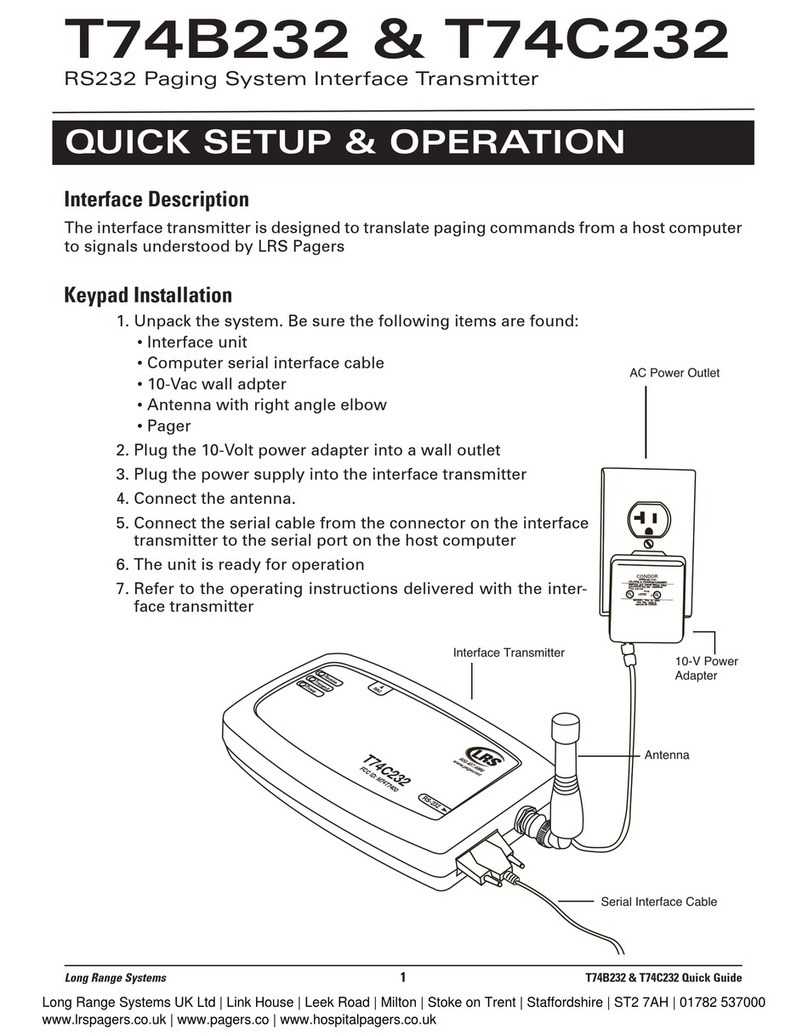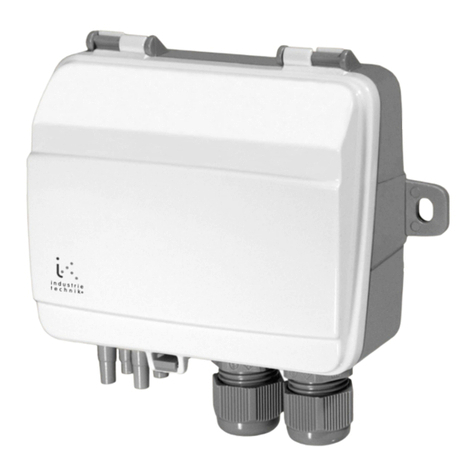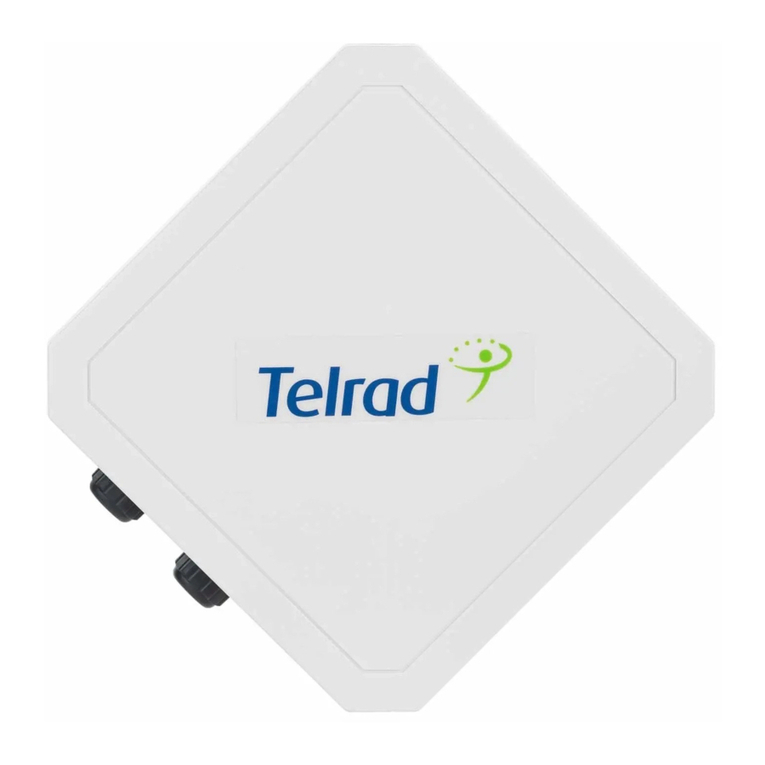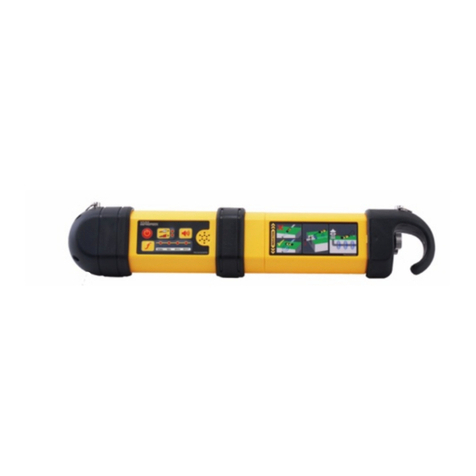Load Cell Systems TLB4 User manual

Installation and User Manual
version 1.04
TLB4
2014/30/UE
EN55022:2010 EN61000-6-2:2005 EN61000-6-4:2007
SYSTEM IDENTIFICATION
Load Cell Systems reserves the right to change specifications without notice. ©2019
Web: https://loadcellsys.com
Email: sales@loadcellsys.com
Phone: 607-426-1467

KEY TO SYMBOLS
Below are the symbols used in the manual to draw the reader's attention:
Warning! Risk of electrocution.
Warning! This operation must be performed by skilled workers.
Read the following indications carefully.
Further information.
GUARANTEE
24 months from the delivery document date. The guarantee covers only defected parts and includes the replacement parts and
labour. All shipping and packing costs are paid by the customer. It is possible to have the repair in guarantee on condition that the
returned product has not been transformed, damaged or repaired without authorization. No guarantee is applicable on returned
products without the original label and/or serial number. No guarantee against misuse.
Batteries: LCS provides 1 year guarantee from the date of delivery note, against material defects or battery manufacturing faults.
Disposal of Waste Equipment by Users in Private Households in the European Union
This symbol on the product or on its packaging indicates that this product must not be disposed of with
your other household waste. It is your responsibility to dispose of your waste equipment by handing it
over to a designated collection point for the recycling of waste electrical and electronic equipment. The
separate collection and recycling of your waste equipment at the time of disposal will help preserve
natural resources and protect human health and the environment. For more information about where you
can drop off your waste equipment for recycling, please contact your local waste disposal Authority or
the equipment retailer.

TABLE OF CONTENTS
USER WARNINGS................................................................................................................. 1
RECOMMENDATIONS FOR CORRECT INSTALLATION OF WEIGHING INSTRUMENTS. 1
RECOMMENDATIONS FOR CORRECT INSTALLATION OF THE LOAD CELLS ............... 1
LOAD CELL INPUT TEST (QUICK ACCESS) ......................................................................... 3
LOAD CELL TESTING............................................................................................................. 3
MAIN SPECIFICATIONS OF THE INSTRUMENT.................................................................. 4
TECHNICAL SPECIFICATIONS ............................................................................................ 5
ELECTRICAL CONNECTIONS.............................................................................................. 6
BASIC INFORMATION............................................................................................................. 6
WIRING DIAGRAM................................................................................................................... 6
LED AND KEYS FUNCTIONS ............................................................................................... 8
MENU MAP ............................................................................................................................ 9
SETPOINT................................................................................................................................ 9
SYSTEM PARAMETERS ......................................................................................................... 9
INSTRUMENT COMMISSIONING........................................................................................ 11
PROGRAMMING OF SYSTEM PARAMETERS .................................................................. 12
THEORETICAL CALIBRATION ............................................................................................. 12
MAXIMUM CAPACITY ....................................................................................................................13
TARE WEIGHT ZERO SETTING.....................................................................................................13
ZERO VALUE MANUAL ENTRY.....................................................................................................14
REAL CALIBRATION (WITH SAMPLE WEIGHTS)............................................................... 15
CONFIRMATION AND CHANGE OF ACTIVE CHANNELS................................................... 16
EQUALIZATION ..................................................................................................................... 17
FILTER ON THE WEIGHT...................................................................................................... 18
ANTI PEAK......................................................................................................................................18
ZERO PARAMETERS............................................................................................................ 19
RESETTABLE WEIGHT SETTING FOR SMALL WEIGHT CHANGES ..........................................19
AUTOMATIC ZERO SETTING AT POWER-ON..............................................................................19
ZERO TRACKING ...........................................................................................................................19
SETTING UNITS OF MEASURE............................................................................................ 20
DISPLAY COEFFICIENT .................................................................................................................20
OUTPUTS AND INPUTS CONFIGURATION ......................................................................... 22
SEMI-AUTOMATIC TARE (NET/GROSS).............................................................................. 23
PRESET TARE (SUBTRACTIVE TARE DEVICE) ................................................................. 24
SEMI-AUTOMATIC ZERO (WEIGHT ZERO-SETTING FOR SMALL VARIATIONS) ............ 24
PEAK...................................................................................................................................... 25
ANALOG OUTPUT (TLB4 ONLY).......................................................................................... 25
SERIAL COMMUNICATION SETTING .................................................................................. 27
RS485 SERIAL COMMUNICATION ................................................................................................28
DIRECT CONNECTION BETWEEN RS485 AND RS232 WITHOUT CONVERTER.......................29
AUTOMATIC DIAGNOSTICS OF LOAD DISTRIBUTION...................................................... 29

TEST....................................................................................................................................... 30
EVENTS LOG......................................................................................................................... 31
INFO MENU............................................................................................................................ 31
SETPOINT PROGRAMMING............................................................................................... 32
USE WITH W SERIES INSTRUMENTS ............................................................................... 33
CONNECTION TO THE WEIGHT INDICATOR ...................................................................... 33
ADDITIONAL MENU MAP...................................................................................................... 34
TLB4 REMOTE CONTROL .................................................................................................... 35
REMOTE KEYPAD LOCKING.........................................................................................................35
ADDITIONAL ALARMS.......................................................................................................... 35
ALARMS .............................................................................................................................. 36
PRINTING EXAMPLES........................................................................................................ 38
FRONT PANEL MOUNTING................................................................................................ 40
RESERVED FOR THE INSTALLER..................................................................................... 41
MENU LOCKING.................................................................................................................... 41
MENU UNLOCKING............................................................................................................... 41
TEMPORARY MENU UNLOCKING ....................................................................................... 41
DATA DELETION AND PROGRAM SELECTION ................................................................. 41
KEYPAD OR DISPLAY LOCKING......................................................................................... 42

- 1 -
USER WARNINGS
RECOMMENDATIONS FOR THE PROPER USE OF WEIGHING INSTRUMENT
-Keep away from heat sources and direct sunlight
-Repair the instrument from rain (except special IP versions)
-Do not wash with water jets (except special IP versions)
-Do not dip in water
-Do not spill liquid on the instrument
-Do not use solvents to clean the instrument
-Do not install in areas subject to explosion hazard (except special Atex versions)
-If the working temperature reaches the permitted limits, it is advisable to distance the instruments
to ensure adequate air flow and avoid malfunctions (e.g.: sudden shutdowns or disconnections)
RECOMMENDATIONS FOR CORRECT INSTALLATION OF WEIGHING INSTRUMENTS
The terminals indicated on the instrument’s wiring diagram to be connected to earth must
have the same potential as the weighed structure (same earthing pit or earthing system). If
you are unable to ensure this condition, connect with an earthing wire the terminals of the
instrument (including the terminal –SUPPLY) to the weighed structure.
The cell cable must be individually led to its panel input and not share a conduit with other cables;
connect it directly to the instrument terminal strip without breaking its route with support terminal strips.
Use “RC” filters on the instrument-driven solenoid valve and remote control switch coils.
Avoid inverters in the instrument panel; if inevitable, use special filters for the inverters and separate
them with sheet metal partitions.
The panel installer must provide electric protections for the instruments (fuses, door lock switch
etc.).
It is advisable to leave the equipment always switched on to prevent the formation of condensation.
MAXIMUM CABLE LENGTHS
-RS485: 1000 metres with AWG24, shielded and twisted cables
-Analog current output: up to 500 metres with 0.5 mm2 cable
-Analog voltage output: up to 300 metres with 0.5 mm2cable
RECOMMENDATIONS FOR CORRECT INSTALLATION OF THE LOAD CELLS
INSTALLING LOAD CELLS: The load cells must be placed on rigid, stable in-line structures; it
is important to use the mounting modules for load cells to compensate for misalignment of the
support surfaces.
PROTECTION OF THE CELL CABLE: Use water-proof sheaths and joints in order to protect the
cables of the cells.

- 2 -
MECHANICAL RESTRAINTS (pipes, etc.): When pipes are present, we recommend the use of
hoses and flexible couplings with open mouthpieces with rubber protection; in case of hard pipes,
place the pipe support or anchor bracket as far as possible from the weighed structure (at a distance
at least 40 times the diameter of the pipe).
WELDING: Avoid welding with the load cells already installed. If this cannot be avoided, place the
welder ground clamp close to the required welding point to prevent sending current through the load
cell body.
WINDY CONDITIONS - KNOCKS - VIBRATIONS: The use of weigh modules is strongly
recommended for all load cells to compensate for misalignment of the support surfaces. The system
designer must ensure that the plant is protected against lateral shifting and tipping relating to:
shocks and vibration; windy conditions; seismic conditions in the installation setting; stability of the
support structure.
EARTHING THE WEIGHED STRUCTURE: By means of a copper wire with suitable cross-section,
connect the cell upper support plate with the lower support plate, then connect all the lower plates to
a single earthing system. Electrostatic charges accumulated because of the product rubbing against
the pipes and the weighed container walls are discharged to the ground without going through or
damaging the load cells. Failure to implement a proper earthing system might not affect the
operation of the weighing system; this, however, does not rule out the possibility that the cells and
connected instrument may become damaged in the future. It is forbidden to ensure earthing system
continuity by using metal parts contained in the weighed structure.
FAILURE TO FOLLOW THE INSTALLATION RECOMMENDATIONS WILL BE CONSIDERED
A MISUSE OF THE EQUIPMENT
OK OK
NO NO
NO
OK

- 3 -
LOAD CELL INPUT TEST (QUICK ACCESS)
From the weight display, press for 3 seconds: the display shows the response signal of each
load cell ( ÷ ) expressed in mV with three decimals.
Example: a load cell with 2.000 mV/V sensitivity provides a response signal between 0 and 10 mV.
LOAD CELL TESTING
Load cell resistance measurement (use a digital multimeter):
-Turn off the instrument.
-The value between the positive signal wire and the negative signal wire must be equal or similar
to the one indicated in the load cell data sheet (output resistance).
-The value between the positive excitation wire and the negative excitation wire must be equal or
similar to the one indicated in the load cell data sheet (input resistance).
Load cell voltage measurement (use a digital multimeter):
-Turn on the instrument.
-Take out the load cell to be tested from underneath the container, or alternatively, lift the
container support.
-Make sure that the excitation of two wires of the load cell connected to the instrument (or
amplifier) is 5 VDC ±3%.
-Measure the response signal between the positive and the negative signal wires by directly
connecting them to the tester, and make sure that it is comprised between 0 and 0.5 mV.
-Apply load to the cell and make sure that there is a signal increment.
IF ONE OF THE ABOVE CONDITIONS IS NOT MET, PLEASE CONTACT THE TECHNICAL
ASSISTANCE SERVICE.
3 s

- 4 -
MAIN SPECIFICATIONS OF THE INSTRUMENT
Weight transmitter with 6-wire load cells inputs suitable for assembly on back panel fitted
Omega/DIN rail or on front panel using the included mounting kit. Dimensions: 26x115x120 mm.
Six-digit semialphanumeric display, 8 mm height, 7 segment. Four-key keyboard.
RS485 serial port for connection to: PC/PLC up to 32 instruments (max 99 with line repeaters)
by ASCII or ModBus R.T.U. protocol, remote display, printer. Optional: integrated Profibus DP,
DeviceNet, CANopen, Profinet IO, Ethernet/IP, Ethernet TCP/IP, Modbus TCP, RS232/
RS485, SERCOS III, PowerLink, CC-Link output.
TLB4 only: optoisolated 16 bit analog output (tension or current).
8 independent channels:automatic detection of connected load cells.
Digital equalization: load cell response uniformed via software.
Load distribution: indication of the weight percentage on each load cell.
Automatic diagnostics: load distribution check to detect any faults.
Events log: storage of the last 50 events: calibrations, zero-settings, errors, equalizations.
Alarm Relay: outputs can be set to switch in case of alarm.

- 5 -
TECHNICAL SPECIFICATIONS
POWER SUPPLY and CONSUMPTION
12/24 VDC ±10%; 5 W
No. OF LOAD CELLS IN PARALLEL and SUPPLY
max 16 (350 ohm); 5 VDC / 240 mA
LINEARITY
< 0.01% F.S.
ANALOG OUTPUT LINEARITY (TLB4 only)
< 0.01% F.S.
THERMAL DRIFT
< 0.0005% F.S./°C
ANALOG OUTPUT THERMAL DRIFT (TLB4 only)
< 0.003 % F.S./°C
A/D CONVERTER
4 channels, 24 bit (16000000 points), 4.8 kHz
DIVISIONS
(with measurement range ±10 mV = sens. 2 mV/V)
±999999
MEASUREMENT RANGE
±39 mV
MAX SENSITIVITY OF USABLE LOAD CELLS
±7 mV/V
MAX CONVERSIONS PER SECOND
600 conversions/second
DISPLAY RANGE
±999999
NO. OF DECIMALS / DISPLAY INCREMENTS
0÷4 / x 1 x 2 x 5 x 10 x 20 x 50 x 100
DIGITAL FILTER / READINGS PER SECOND
11 levels / 5÷600 Hz
RELAY OUTPUTS
N. 3 - max 115 VAC; 150 mA
DIGITAL INPUTS
N. 2 - optoisolated 5 - 24 VDC PNP
SERIAL PORTS
RS485
BAUD RATE
2400, 4800, 9600, 19200, 38400, 115200
HUMIDITY (non condensing)
85%
STORAGE TEMPERATURE
-30°C +80°C
WORKING TEMPERATURE
-20°C +60°C
OPTOISOLATED ANALOG OUTPUT (TLB4 only)
16 bit - 65535 divisions
0÷20 mA; 4÷20 mA (max 300 ohm);
0÷10 V; 0÷5 V, ±10 V; ±5 V (min 10 kohm)
RELAY OUTPUTS
N. 3 - max 30 VAC, 60 VDC; 150 mA
WORKING TEMPERATURE
-20°C +50°C
Equipment to be powered by 12-24 VDC LPS or Class 2 power source.

- 6 -
ELECTRICAL CONNECTIONS
BASIC INFORMATION
-It is recommended that the power supply negative pole be grounded.
-It is possible to supply up to 16 350 ohm load cells.
-Connect terminal “–SUPPLY” to the RS485 common of the connected instruments in the event
that these receive alternating current input or that they have an optically isolated RS485.
-In case of an RS485 network with several devices it is recommended to activate the 120 ohm
termination resistance on the two devices located at the ends of the network, as described in the
paragraph RS485 SERIAL CONNECTION.
WIRING DIAGRAM
In case of difficulty connecting all the reference wires of the installed load cells, simply connect
those of the load cell located at the average distance from the instrument. The reference wires not
used must be individually isolated.
USE OF 4-WIRE LOAD CELLS: if all the load cells used are 4-wire, make a jumper between -EX
(26)and -REF (22) and between +EX (25) and +REF (21).
LOAD CELL 1 LOAD CELL 2 LOAD CELL 3 LOAD CELL 4
15 16 17 18 19 20 21 22 23 24 25 26 27 28 29 30
+SIG
-SIG
SH
+EX
-EX
+REF
-REF
+SIG
-SIG
SH
+EX
-EX
+REF
-REF
+SIG
-SIG
SH
+EX
-EX
+REF
-REF
+SIG
-SIG
SH
+EX
-EX
+REF
-REF
1 2 345678 9
OUT 1
OUT 2
OUT 3
OUT COMMON
IN 1
IN 2
IN COMMON
+12/24 VDC
0 VDC
12/24 VDC
SUPPLY
+
-
INPUTS
supply 5÷24 VDC
OUTPUTS
max 115 VAC 150 mA
10 11 12
+ 0÷20 - 4÷20 mA
+ 0÷10 VDC
ANALOG
OUTPUT
- COMMON
TLB4 ONLY
+ RS485
- RS485
RS485

- 7 -
TERMINALS LEGEND
1
OUTPUT No. 1
17
+LOAD CELLS 1 and 2 EXCITATION (+EX)
2
OUTPUT No. 2
18
-LOAD CELLS 1 and 2 EXCITATION (-EX)
LOAD CELLS SHIELD
3
OUTPUT No. 3
19
+LOAD CELL 2 SIGNAL
4
OUTPUT COMMON
20
-LOAD CELL 2 SIGNAL
5
INPUT No. 1 (+VDC min 5 V max 24 V)
21
+LOAD CELLS REF/SENSE
6
INPUT No. 2 (+VDC min 5 V max 24 V)
22
-LOAD CELLS REF/SENSE
7
INPUT COMMON (-VDC 0 V)
23
+LOAD CELL 3 SIGNAL
8
+SUPPLY (12/24 VDC)
24
-LOAD CELL 3 SIGNAL
9
-SUPPLY (12/24 VDC)
RS485: SHIELD, GND
25
+LOAD CELLS 3 and 4 EXCITATION (+EX)
10
+ANALOG OUTPUT 0÷20 or 4÷20 mA
(TLB4 only)
26
-LOAD CELLS 3 and 4 EXCITATION (-EX)
LOAD CELLS SHIELD
11
+ANALOG OUTPUT 0÷10 V
(TLB4 only)
27
+LOAD CELL 4 SIGNAL
12
-ANALOG OUTPUT COMMON
(TLB4 only)
28
-LOAD CELL 4 SIGNAL
15
+LOAD CELL 1 SIGNAL
29
RS485: +
16
-LOAD CELL 1 SIGNAL
30
RS485: -

- 8 -
LED AND KEYS FUNCTIONS
LED
Main function
Secondary function *
NET
net weight (semi-automatic tare or preset tare)
LED lit: output 3 closed
zero (deviation from zero not more than ±0.25
divisions)
LED lit: output 2 closed
stability
LED lit: output 1 closed
kg
unit of measure: kg
g
unit of measure: g
LED lit: input 2 closed
L
unit of measure other than kg or g
LED lit: input 1 closed
*) To activate the secondary LED function, during weight display press and hold down the keys
and (press immediately followed by ).
KEY
Short press
Long press (3 s)
Into menus
Semi-automatic zero
Tare resetting
Cancel or return to previous
menu
Gross Net
Net Gross
Select figure to be modified
or go to previous menu item.
Weight print
mV load cell test
Modify selected figure or go
to next menu item
Setting setpoint and hysteresis
Confirm or enter in
submenu
+
Setting general parameters
(press immediately followed
by )
+
Setting preset tare (press
immediately followed by )
Into menus LEDs light up in sequence to indicate that it is not displaying a weight.
0

- 9 -
MENU MAP
Into menus changes are applied right after pressing the key (no further confirmation is
required).
SETPOINT
SYSTEM PARAMETERS
…
…
+
3 s

- 10 -
+
3 s
TLB4 only

-11 -
INSTRUMENT COMMISSIONING
Upon switch-on, the display shows in sequence:
- → (ONLY in case of approved program);
-instrument model (e.g.: );
- followed by the software code (e.g.: );
-program type: (base);
-followed by the software version (e.g.: );
- followed by the hardware code (e.g.: );
-serial number (e.g.: );
Check that the display shows the weight and that when loading the load cells there is an increase in
weight. If there is not check and verify the connections and correct positioning of the load cells.
-If the instrument has already been theoretical CALIBRATED (plant system identification tag
present on the instrument and on the cover: load cell’s rated data already entered):
▫If the system uses load cells with different sensitivity perform a real or theoretical equalization
(see section EQUALIZATION).
▫Reset to zero (see section TARE WEIGHT ZERO SETTING).
▫Check the calibration with sample weights and correct the indicated weight if necessary (see
section REAL CALIBRATION (WITH SAMPLE WEIGHTS)).
-If the instrument HAS NOT BEEN CALIBRATED (missing plant system identification tag)
proceed with calibration:
▫If the system uses load cells with different sensitivity perform a real or theoretical equalization
(see section EQUALIZATION).
▫If load cells data are unknown, follow the procedure in section REAL CALIBRATION (WITH
SAMPLE WEIGHTS).
▫Enter the rated data of load cells following the procedure given in section THEORETICAL
CALIBRATION.
▫Reset to zero (see section TARE WEIGHT ZERO SETTING).
▫Check the calibration with sample weights and correct the indicated weight if necessary (see
section REAL CALIBRATION (WITH SAMPLE WEIGHTS)).
-If you use the analog output, set the desired analog output type and the full scale value (see
section ANALOG OUTPUT).
-If you use serial communication, set the related parameters (see section SERIAL
COMMUNICATION SETTING).
-If setpoint are used, set the required weight values and the relevant parameters (see sections
SETPOINT PROGRAMMING and OUTPUTS AND INPUTS CONFIGURATION).

- 12 -
PROGRAMMING OF SYSTEM PARAMETERS
From the weight display, press simultaneously keys and to access the parameter setting.
: to enter a menu/confirm the data entry.
: to modify the displayed figure or menu item.
: to select a new figure or modify the displayed menu item.
: to cancel and return to the previous menu.
THEORETICAL CALIBRATION
This function allows the load cell rated values to be set.
To perform the theoretical calibration set the following parameters in sequence:
- (default: ): the system full scale is given by one cell capacity multiplied by the
number of cells used. Example: 4 cells of 1000 kg FULL SCALE = 1000 x 4 = 4000.
The instrument is supplied with a theoretical full scale value corresponding to 10000. To
restore factory values, set 0 as full scale.
- (default: 2.00000 mV/V): sensitivity is a load cell rated parameter expressed in mV/V.
Set the average sensitivity value indicated on the load cells. It’s possible to set a value between
0.50000 and 7.00000 mV/V. Example of 4-cell system with sensitivity: 2.00100, 2.00150,
2.00200, 2.00250; enter 2.00175, calculated as (2.00100 + 2.00150 + 2.00200 + 2.00250) / 4.
-:the division (resolution) is the minimum weight increment value which can be
displayed. It is automatically calculated by the system according to the performed calibration, so
that it is equal to 1/10000 of full scale. It can be changed and be variable between 0.0001 and
100 with x1 x2 x5 x10 increments.
-By modifying the theoretical full scale, the sensitivity or the division, the real calibration
is cancelled and the theoretical calibration only is considered valid.
-If the theoretical full scale and the recalculated full scale in real calibration (see section
REAL CALIBRATION (WITH SAMPLE WEIGHTS)) are equal, this means that the
calibration currently in use is theoretical; if they are different, the calibration in use is the
real calibration based on sample weights.
-By modifying the theoretical full scale or the divisions, the system’s parameters
containing a weight value will be set to default values (setpoint, hysteresis, etc.).
+

-13 -
MAXIMUM CAPACITY
: maximum displayable weight (from 0 to max full scale; default: 0). When the weight exceeds
this value by 9 divisions, the display shows . To disable this function, set 0.
TARE WEIGHT ZERO SETTING
This menu may also be accessed directly from the weight display, holding down the key
for 3 seconds.
Perform this procedure after having set the THEORETICAL CALIBRATION data.
Use this function to set to zero the weight of the empty system after commissioning and then later
on to compensate zero variations due to the presence of product residues.
Procedure:
-Confirm the message by pressing .
-The weight value to be set to zero is displayed. In this phase all of the LEDs are flashing.
-Confirming once again, the weight is set to zero (the value is stored to the permanent memory).
-Press to display the value of the total weight reset by the instrument, given by the sum of all
of the previous zero settings.
DIAGNOSTICS ON ZERO: if diagnostics on zero has been enabled, the instrument can display and
store the load distributions on zero and the mV on active channels (see section TEST). If the stored
weight is zero and all channels are , it means that no zero-setting has yet been performed.
WARNING: diagnostics on zero is performed only if the load distribution has been stored
at least once.
+
+

-14 -
The tare weight zero-setting procedure is the following:
-Confirm the message by pressing .
-The current weight value, preceded by the letter , is displayed.
-Press and to display in sequence the current load distribution on each channel
( ÷ ); press to return to the previous display.
-By pressing the last weight set to zero, preceded by the letter , is displayed.
-Press and to display in sequence the load distribution stored during the last zero-setting
on each channel ( ÷ ); press to return to the previous display.
-Press and select or to store or not the current distribution and the zero
mV values (see section TEST).
-By pressing the weight value to be set to zero is displayed, in this phase all of the LEDs are
flashing.
-Confirming once again, the weight is set to zero (the value is stored to the permanent memory).
-Press to display the value of the total weight reset by the instrument, given by the sum of all
of the previous zero settings.
ZERO VALUE MANUAL ENTRY
WARNING: Perform this procedure only if it’s not possible to reset the weighed structure tare, for
example because it contains product that cannot be unloaded.
Set in this parameter the estimated zero value (from 0 to max 999999; default: 0).
…
…
+

- 15 -
REAL CALIBRATION (WITH SAMPLE WEIGHTS)
After having performed the THEORETICAL CALIBRATION, EQUALIZATION and TARE WEIGHT
ZERO SETTING, this function allows correct calibration to be done using sample weights of
known value and, if necessary, any deviations of the indicated value from the correct value to
be corrected.
Load onto the weighing system a sample weight, which must be at least 50% of the maximum
quantity to be weighed.
By confirming the message the flashing value of the weight currently on the system is
displayed. In this phase all of the LEDs are off. Adjust the value on display by using the arrow keys if
necessary. After confirming, the new set weight will appear with all the LEDs flashing. After an
additional confirmation, the message will be restored and by repeatedly pressing the key
the weight will once again be displayed.
Example: for a system of maximum capacity 1000 kg and 1 kg division, two sample weights are
available, one of 500 kg and the other one of 300 kg. Load both weights onto the system and correct
the indicated weight to 800. Now remove the 300 kg weight, the system must show 500; remove the
500 kg weight too; the system must read zero. If this does not happen, it means that there is a
mechanical problem affecting the system linearity.
WARNING: identify and correct any mechanical problems before repeating the procedure.
-If theoretical full scale and recalculated full scale in real calibration are equal, it means
that the theoretical calibration is currently in use; otherwise, the real calibration based on
sample weights is in use.
-If the correction made changes the previous full scale for more than 20%, all the
parameters with settable weight values are reset to default values.
LINEARISATION OPTION ON MAX 5 POINTS:
It is possible to perform a linearisation of the weight repeating the above-described procedure
up to a maximum of five points, using five different sample weights. The procedure ends by
pressing the button or after entering the fifth value; at this point it will no longer be possible to
change the calibration value, but only to perform a new real calibration. To perform a new calibration,
should return to the weight display and then re-entering into the calibration menu.
By pressing after having confirmed the sample weight that has been set, the full scale appears,
recalculated according to the value of the maximum sample weight entered and making reference to
the cell sensitivity set in the theoretical calibration ().
+

-16 -
CONFIRMATION AND CHANGE OF ACTIVE CHANNELS
After performing the calibration and verifying that the system works properly, you can confirm the
channels automatically detected by the instrument; in this way, in case of accidental interruption of
the cable of one or more load cells, the instrument displays the alarm.
(default): confirmation is requested (),press to proceed or press to cancel.
The display shows the number of channels automatically detected by the instrument, press to
confirm and save the current selection or press to exit with no change.
confirmation is requested (),press to proceed or press to cancel. Press
or to select the channel, confirm with and press or to activate ()or deactivate it
(); press to save the current selection and exit.
After editing, you must repeat equalization, zero setting and calibration using a sample
weight.
+
Table of contents
Other Load Cell Systems Transmitter manuals
